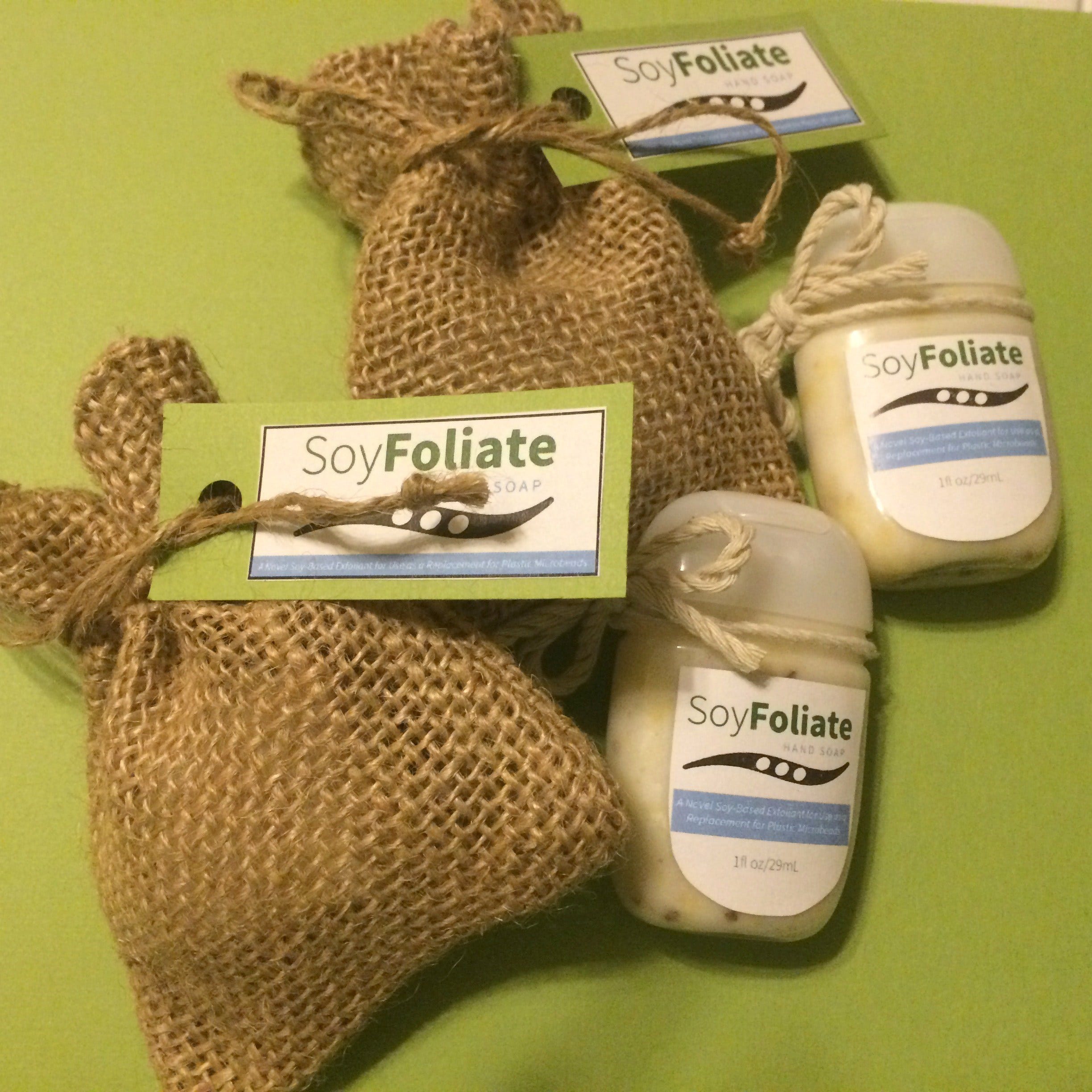Students Invent Soybean Soap to Replace Harmful Microbeads
 SoyFoliate contains tiny bits of soybeans
SoyFoliate contains tiny bits of soybeans
Subscriber Benefit
As a subscriber you can listen to articles at work, in the car, or while you work out. Subscribe NowThe tiny microbeads that have become commonplace in hand soaps, toothpastes and body wash have been outlawed due to the damage they’re causing in U.S. waterways. As manufacturers scramble to find a replacement for microbeads that consumers have come to expect, a team of Purdue University students believes the answer could be Indiana soybeans.
The four-student team scrubbed out the competition at Purdue’s recent Student Soybean Product Innovation event where its soy exfoliant hand soap, called SoyFoliate, claimed top prize. The conventional plastic microbeads in personal care products provide a gritty texture designed to exfoliate by scrubbing away dirt or dead skin, but their tiny size means they escape wastewater filtration systems and are deposited into rivers, lakes and oceans.
Researchers found nearly 2 million beads in a single square kilometer of Lake Erie in 2013. Scientists say the nearly-impossible-to-dissolve beads are eaten by fish, become lodged in their stomach or intestines and kill the fish—disrupting the water ecosystem. The federal government has ordered manufacturers stop production of the microbeads by 2017.
The students who created SoyFoliate believe their soap could be the answer to giving consumers what they want, while keeping waterways safe. The team replaced the plastic microbeads with tiny bits of soybeans; in their raw state, the beans have a similar hardness and texture as a popcorn kernel.
“Basically, we just broke [the soybeans] down into tiny particles. We put them in a bone miller, which is typically used to break agricultural-based products into fine particles for feeds,” says Purdue Doctor of Pharmacy student and SoyFoliate team member Alison Switzer. “Then we used a machine that shakes the particles from one another to separate them, so we could get them to the coarseness and size we wanted. It was a simple two-step process.”
Unlike plastic microbeads, the soy beads degrade in water due to their natural composition, and the team says they don’t pose a threat to fish if ingested. To protect the beads’ shelf-life in the water-based liquid soap, they’re coated in soy oil. The team notes soybeans also provide greater versatility for different applications than plastic microbeads.
“Our exfoliating soy microbeads are a little coarser; they aren’t as smooth all the way around in a perfect sphere,” says Switzer. “The coarseness gave people better exfoliating properties. And we can cater to different sizes of what different manufacturers would want. Products could have more fine or more coarse beads depending on what consumers prefer.”
Switzer says other plastic microbead replacements being researched include ground almonds, walnut shells and jojoba, also known as goat nuts. However, the team argues these substitutes are more expensive than soybeans and pose a risk to people with nut allergies.
Able to be produced in bar or liquid form, the soap is just one example of new uses for Hoosier soybeans. The Indiana Soybean Alliance (ISA) sponsors the competition each year to harvest new ideas that will drive the consumption of the crop. The value of Indiana’s soybeans in 2015 was $2.43 billion, and the state ranked fifth nationally for production.
“Traditionally, our farmers have been very good at continually increasing their yields; the way to keep your prices stabilized is to find new homes—new uses—for soybeans,” says ISA New Uses Contractor Julie Ohmen. “That increases demand, rather than just shifting bean consumption from one place to another.”
Purdue and ISA are currently “shopping around” SoyFoliate to green-technology industry groups that could purchase the license and commercialize the soap. Ohmen says the university and ISA are also exploring ways that students who help develop innovations could be more involved as their ideas progress toward commercialization.
The SoyFoliate team is hopeful their innovation can be worked into a lather to wash away harmful plastic microbeads—and maybe even bubble over into a business.
Ohmen says ISA and Purdue are working to keep students more involved as their innovations progress toward commercialization.
Ohmen says the student competition helps train tomorrow’s soybean-focused scientists.
Switzer says soy beads are an environmentally-friendly and sustainable alternative to plastic microbeads.
